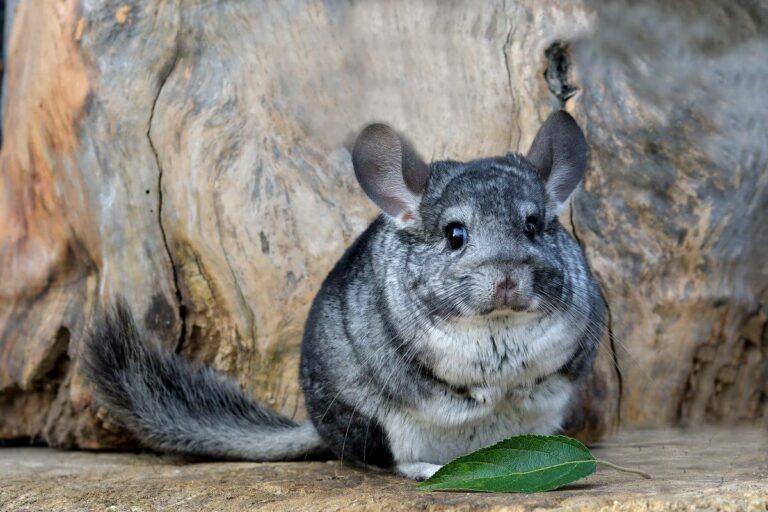The Essentials
Chinchillas possess an astonishing 60 hairs per follicle, contributing to their irresistibly plush and velvety coat. Find out more…
Chinchillas hail from the Andes Mountains in South America, with a history dating back to the pre-Incan Chincha civilization. Find out more…
Chinchillas faced endangerment due to fur trade but are now protected by conservation efforts; they make delightful pets when given proper care and attention.
Are you ready to embark on a fascinating journey into the world of chinchillas? These adorable little creatures have a captivating history and unique characteristics that will leave you in awe. So, let’s dive righTo survive the harsh conditions of their native habitat, chinchillas have evolved some remarkable adaptations. Their dense coat, consisting of approximately 60 hairs per follicle, acts as a natural defense mechanism against cold temperatures and predators. In addition, their exceptional jumping ability allows them to escape dangerous situations with ease.t in and uncover the nature and origins of these charming fluffballs!
Meet the Chinchillas: Nature’s Furry Marvels

Chinchillas, those adorable little rodents, have captured the hearts of animal lovers around the world with their enchanting appearance and endearing personality. Let’s take a closer look at these fascinating creatures that call the Andes of South America home and belong to the Chinchillidae family. Prepare to be amazed by the incredible survival tactics and unique characteristics that make chinchillas true wonders of nature.
Furry Wonder: The Secret of Their Impossibly Soft Fur
One of the most extraordinary features of chinchillas is their fur. Nature has given them an exquisite coat that is undeniably one of the softest in the animal kingdom. The magic lies in the density of their fur, which is unlike any other mammal. Can you believe that a single chinchilla follicle can produce up to 60 hairs? This extraordinary feature not only provides insulation against the mountain cold, but also makes their pelts highly sought after in the fur trade.
A Glimpse into the Andean Wonderland: Their Native Habitat
The Andes Mountains, which stretch along the western edge of South America, provide the perfect environment for chinchillas to thrive. This diverse and challenging environment is characterized by high altitudes, rocky terrain, and varying temperatures, from scorching heat during the day to freezing cold at night. In this harsh landscape, chinchillas have learned to adapt and evolve in ways that have ensured their survival for thousands of years.
Keyfact: Chinchillas have a fascinating connection to the ancient Andean civilizations. Before they became popular pets, chinchillas were highly valued by the indigenous peoples of the Andes, who admired their soft fur and even used them as a form of currency in trade.
Adaptation and Survival: How Chinchillas Thrive

To survive the harsh conditions of their native habitat, chinchillas have evolved some remarkable adaptations. Their dense coat, consisting of approximately 60 hairs per follicle, acts as a natural defense mechanism against cold temperatures and predators. In addition, their exceptional jumping ability allows them to escape dangerous situations with ease.
Did you know that chinchillas have a unique ability called “fur slip”? When threatened or caught by a predator, they can release clumps of their fur as a defense mechanism, allowing them to escape while the predator is left with just a mouthful of fluff!
Endangered Beauty: The Conservation of Chinchillas
As the demand for their luxurious fur grew, chinchilla populations suffered severe declines in the 19th and 20th centuries. Fortunately, as awareness of their vulnerability grew, conservation efforts were put in place to protect these little wonders. Today, international laws and responsible breeding practices are helping to ensure their survival, and many people have chosen not to support the fur trade, opting instead to keep chinchillas as beloved pets.
A Loving Companion: Chinchillas as Pets
Their irresistibly cute looks and friendly personalities have made chinchillas popular pets around the world. If you decide to bring one into your home, be prepared for an intelligent and social companion. They thrive in the company of their human caregivers and can bring immense joy to your life.
Unraveling the Behavior of Chinchillas as Pets
As you welcome a chinchilla into your home as a furry companion, understanding their behavior is key to fostering a harmonious and enriching relationship. These charming creatures have distinct personalities and social traits that make them both intriguing and delightful pets. Let’s explore the captivating world of chinchilla behavior as they transition from the wild to becoming cherished members of your family.
Curious explorers: Curious nature at play
Chinchillas are naturally curious creatures, and their playful spirit knows no bounds. Given the opportunity, they will explore every nook and cranny of their environment with boundless enthusiasm. Providing them with plenty of toys and opportunities to climb, run, and jump will not only keep them physically active, but mentally stimulated as well.
A Shy Retreat: Understanding Their Introverted Side
Although chinchillas can be incredibly affectionate and friendly, they may exhibit a shy or skittish demeanor, especially when you first bring them home. This behavior is perfectly normal and reflects their cautious nature in the wild, where they are constantly on guard against potential threats. With patience and gentle handling, they will gradually warm up to you and develop a trusting relationship over time.

They communicate in their own way: Chattering and Barking
Chinchillas may not speak our language, but they have their own unique ways of communicating. Listen closely and you may hear their signature chattering sound, which can express excitement, fear, or even anger. If they sense danger or are startled, they may emit a high-pitched bark to alert others in their group. Paying attention to these vocal cues will help you better understand your chinchilla’s emotions and needs.
Dust baths and grooming: Their Peculiar Grooming Rituals
One of the most adorable chinchilla behaviors is dust bathing. Unlike other animals that use water to clean themselves, chinchillas take dust baths in fine volcanic ash or specially formulated chinchilla dust. Rolling and flipping in the dust helps remove excess oil and moisture from their fur, keeping it clean, soft and healthy. Witnessing their adorable dust bath rituals is a delightful experience for any chinchilla owner.
Caring for Chinchillas: Tips and Tricks
Like any pet, chinchillas need proper care to live a happy and healthy life. Their unique needs include a balanced diet, a dust bath to groom their fur, and a spacious cage for exercise. Always remember that adopting a chinchilla is a long-term commitment, as they can live up to 15 years in captivity.
Tip: The ideal diet for pet chinchillas consists of high-quality hay, especially timothy hay, as the primary food source, supplemented with specially formulated chinchilla pellets that provide essential nutrients. In addition, fresh water should always be available, and occasional treats, such as small amounts of fruit or vegetables, can be given in moderation to add variety to their diet.
Embrace the Charm of Chinchillas
Now that you’ve learned about the captivating nature and origins of chinchillas, you’re better equipped to appreciate these furry wonders. Whether you encounter them in the wild or decide to welcome one into your home, these adorable creatures are sure to leave a lasting impression on your heart.
Remember, the world of chinchillas is as diverse and adorable as they are. So the next time you see a chinchilla or hear its name, don’t hesitate to share your newfound knowledge and spread awareness about these wonderful creatures.





